the Japanese march to and capture of Pyongyang
from a contemporary Japanese viewpoint in pictures
NISSHIN SENSOU EMAKI vol.5
Date; MEIJI 28 (1895)
Painter; Suzuki KAZON
Publisher; Shunyoudou
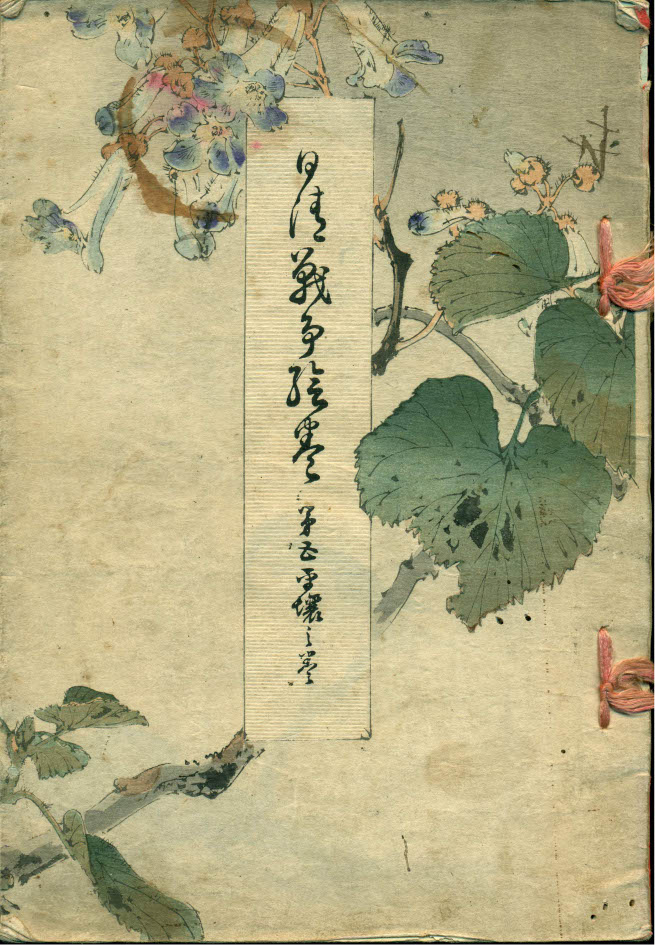 |
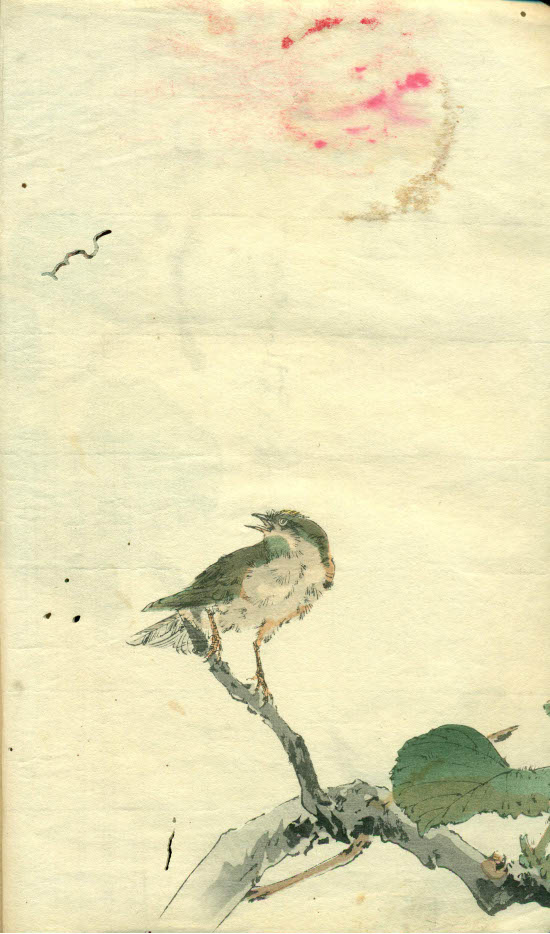 |
THE
BATTLES BETWEEN JAPAN AND CHIN A
BY
SUZUKI
KWASSON
VOL. V. PING YANG.
(The
uncorrected English text below is that given at the end
of the book, after a set of Japanese texts about
the war)
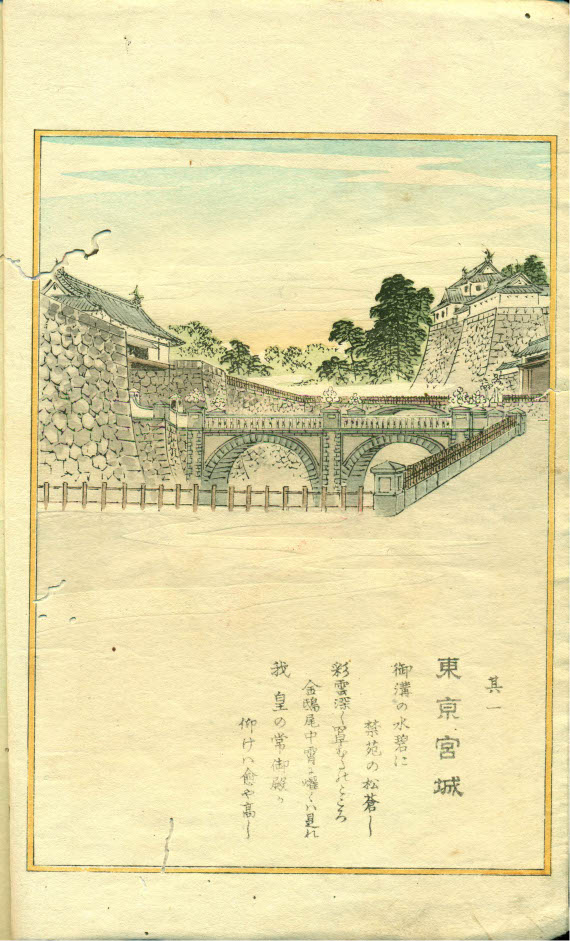
I. The Imperial Palace Tokyo : The Imperial
Majesty of Japan has declared the war against China on
the 1st August, 1894, and the Head-quarters of the
Expedition superintended by his Majesty himself was
removed to Hiroshima from Tokyo, which is too far from
the field.
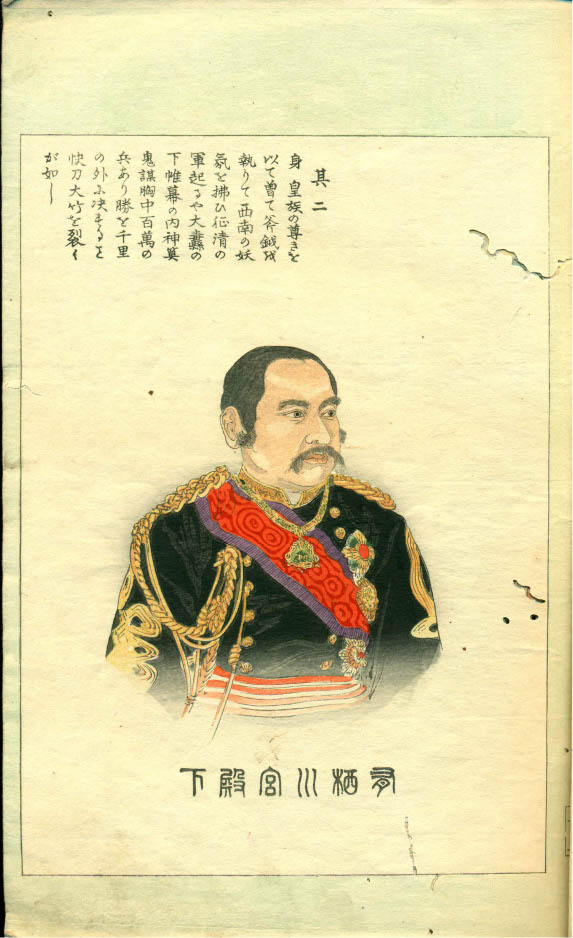
II. General Prince Arisugawa; Director of the
General Staff.-- The General is the Emperor's Uncle and
borne at the 25th February, 1835. (He was for his
earl-ier life a priest that was the custom usual to the
Imperial family to be so in the Tokugawa Period.) He was
appointed to the Commander-in-chief of the Army raised
by the Emperor's party to subdue the Tokugawa's army.
Afterwards he was appointed to the President of the
Regislative Assembly (Genroin) and the General of
Japanese Army. He had visited Europe and America and had
a good experience on the civil and military services. It
is, however, very sorry to have heard his death in the
middle of the war at 24th January, 1895.
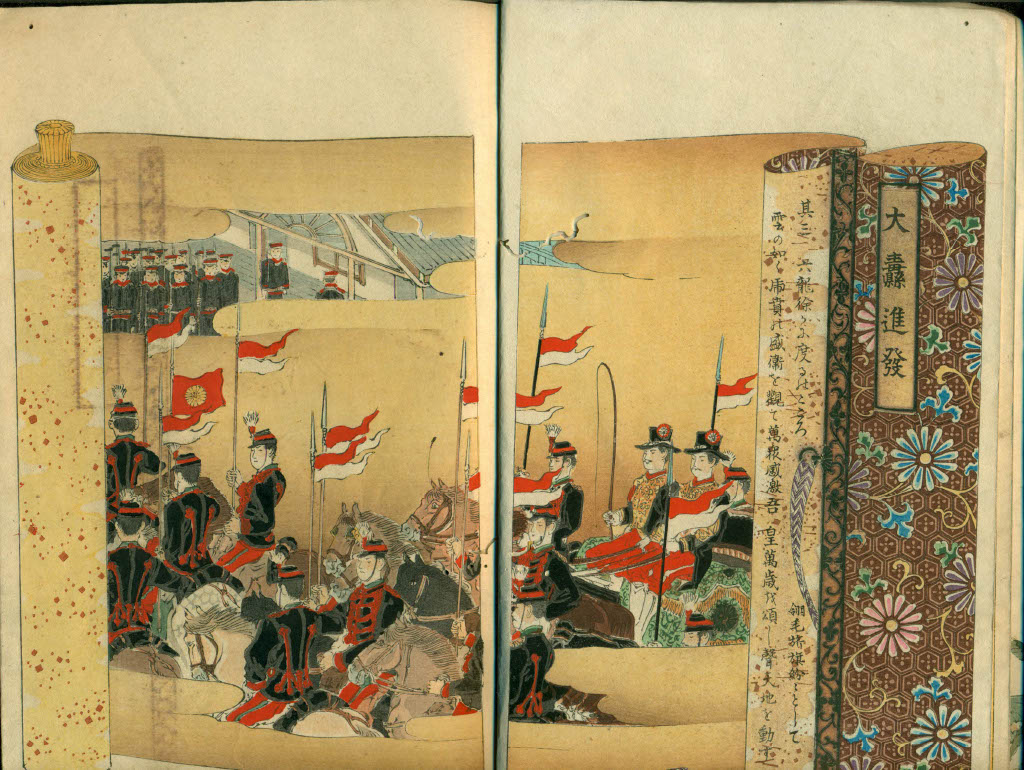
III.
The Head-quarters at Hiroshima :-The Hiroshima is the seat of the 5th
military Direction of Japanese Army, and situated on the
coast of inland sea of Aki. The Emperor has marched his
majesty's seat to castle there, in consequence of the
removal of the Headquaters, and is taking the busy
workes in the Political and Military service from the early
morning to the late evening.
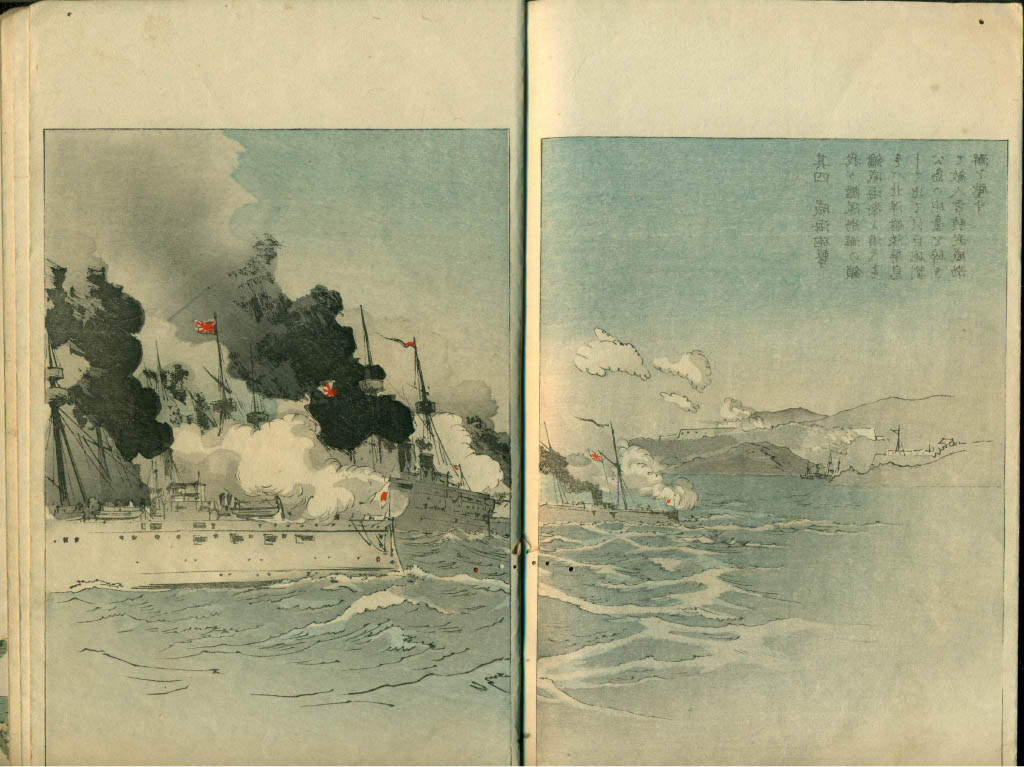
IV. The
Japanese Fleet searching at Wei-Hai-Wei:-Chinese Fleet,
after the defeat of the naval battles of Asan Sea and
Haiyang Island had excluded themselves in the Port
Wei-Hai-Wei without getting out of it in fear of being
attacked by Japanese fleet. When the Japanese fleet had
approached there in the purpose of searching, the
Chinese Forts had tried some firing on the latter, but
no hurt.
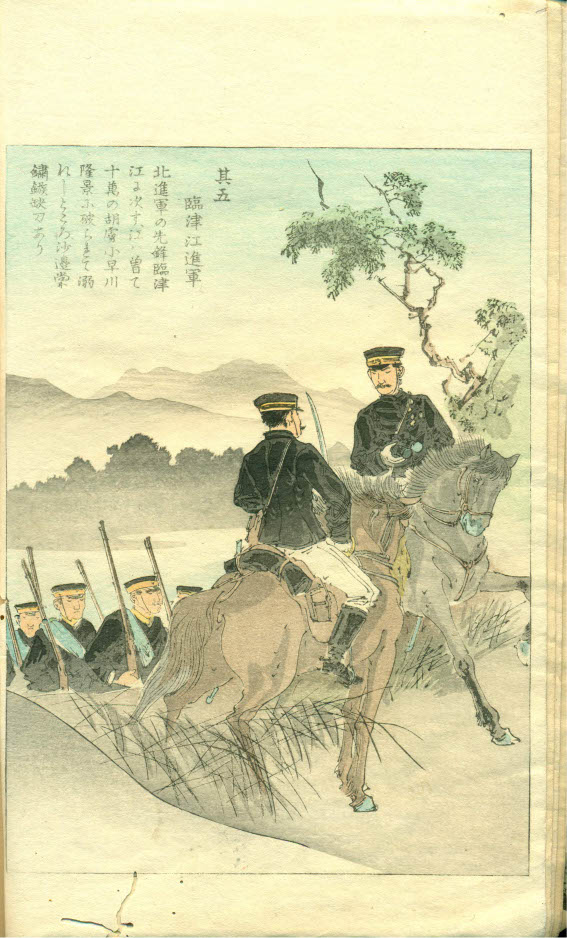
V.
Japanese Army Marching to Rinsinkong ;-The Commander of
1st Division of Army, Viscount Nozu has taken the
command of the expedition to Ping Yang where the Chinese
had encamped to prevent Japanese there for three years.
Now the scheme to seige the Ping Yang castle has heen
desided by Japanese. Major General Oshima from the
front, the commander himself from the left, Major
.General Tatsumi from Sakning, and the Colonel Sato from
the far round route of Gensan, all proceeded towards the
castle at once.
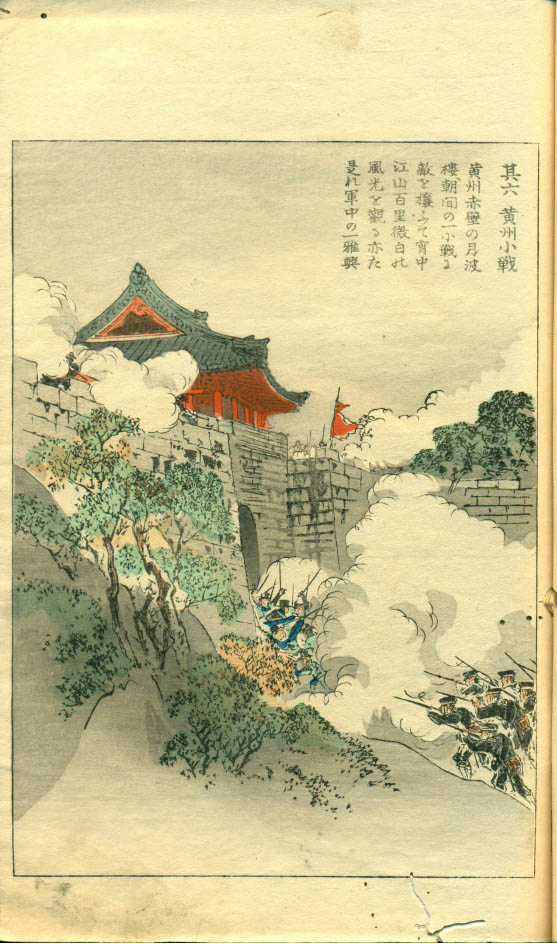
VI.
Capture of Hwangju :-On the way to Ping Yang, Japanese
Army met with the frontier garrison of Chinese Army, at
the neighbourhood of Hwangju. The former shot them and
the latter fled into the castle, which was taken easily
to Japanese.
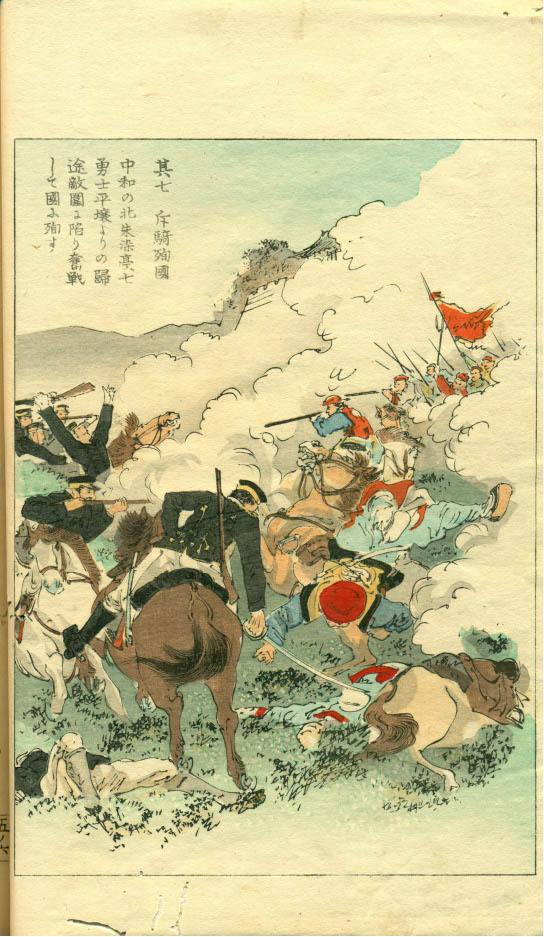
VII.
The battle of Chuzen Tei:- Japanese Frontiers of six
soldiers headed by Lieut. Machiguchi has met with a
corps of Chinese at the Chuzen Tei on the 10th July,
when the former proceeded far off the main body in order
to know the enemy's situation. The Iatter has involved
them up making a sudden appearance from a forest. All
the seven faught with the enemy in their best the
Lieutenant Machiguchi, Sub Lieutenant Takenoucti and
others has been killed, and a soldier Nishi Sohei has
been captured by the Chinese, both having been wounded
by several shots. The Nishi has been killed , it seems
probable, by Chinese in a cruel method.
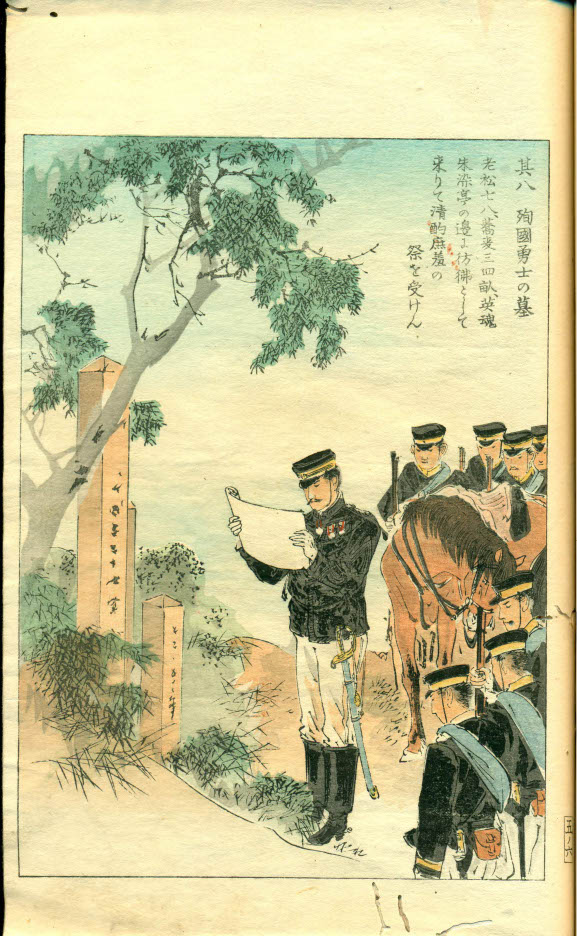
VIII.
The Burial of the Slaughter-Soldiers :-when the main
body of Japanese Army came forward, along the Chuzen
Tei, Major Gen. Oshima has heard of the brave deeds of
his soldiers, and performed a courteous ceremony of
burial in favour of the deceased amid the tears of the
gallant warriors.
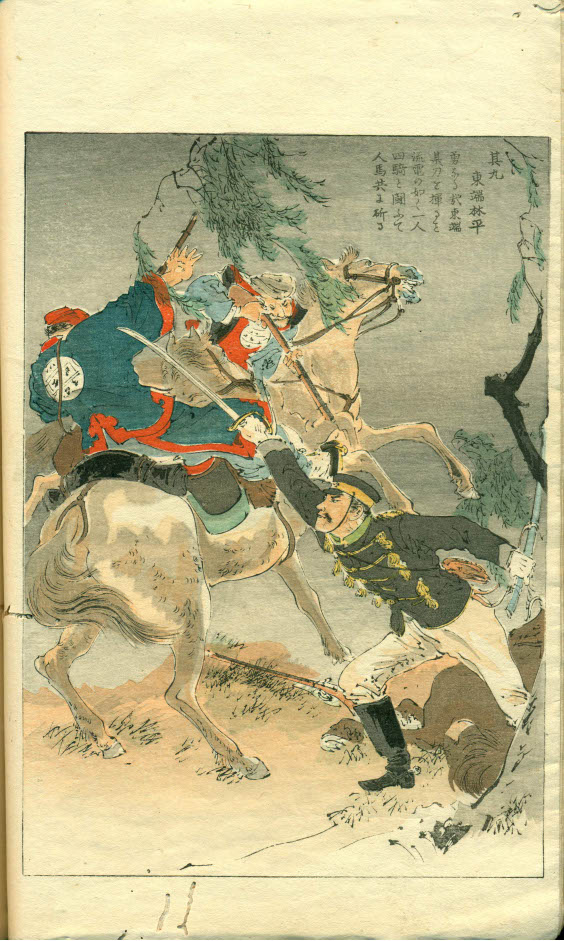
IX.
Higashibata's Gallant Fighting : -Other day when the
similar body consisting of three Japanese cavalry
advanced a further, met with the enemy of over twenty
men, who came over them and made a severe firing. Mr. R.
Higashibata had fell down his horse and he only
therefore was too late to retreat from the spot while
the others have shot some enemies down and retired off
in success. He was compelled to fight in sword with four
Chinese who attacked him with large spears and muskets,
and had succeeded to drive them away in consequence of
his vigorous action.
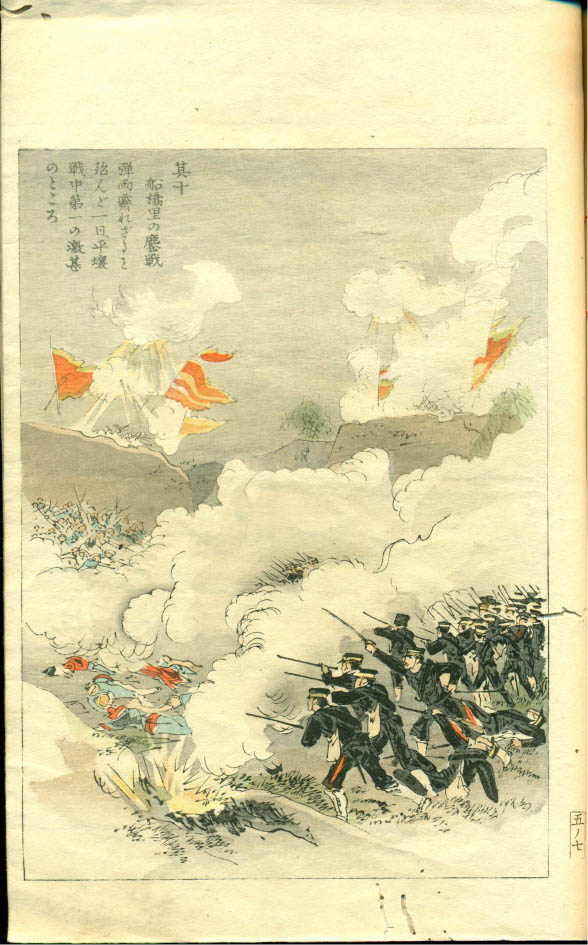
X. The
Great Battle of Senkyori: -On the 12th of July, Japanese
Army has all reached to the southern bank of Daidong
River, on the north of which the castle Ping Yang, the
headquaters of Chinese Army is situated. They apparently
to fire guns, on the enemy as if they are to attack the
castle from its front. The enemy therefore made a severe
resistance in their greatest power of the whole Army on
this points.
One of the Chinese
Ramparts at Senkyori :-As there was no shadows on the
Japanese's side, all the bullets showered on their heads
so that the nine of the tenth of a certain batallion
were shot down before they had reached to the enemy's
headquaters.
The
Chinese has caused many strong ramparts at the southern
bank of the Dai-Dong River, in order to protect the Ping
Yang Castle from their foe before suffering an immediate
attack. On the 15th of October, as the Branch forces
headed by General Tatsurni and Colonel Sato had reached,
as it expected, at the left side of Ping Yang, the Main
force of General Nozu and the Gen. Oshima's brigade
commenced to make general attacking. After a long
fighting from 4 a.m. to 2 p.m. all the Chinese ramparts
were taken to Japanese on a high price, although they
had met with unexpected stubborn resistance.
The
General Oshima's brigade paid the highest price. He
himself wounded on his abdomen, and his officers and
soldiers of above one hundred and half in number have
been killed.
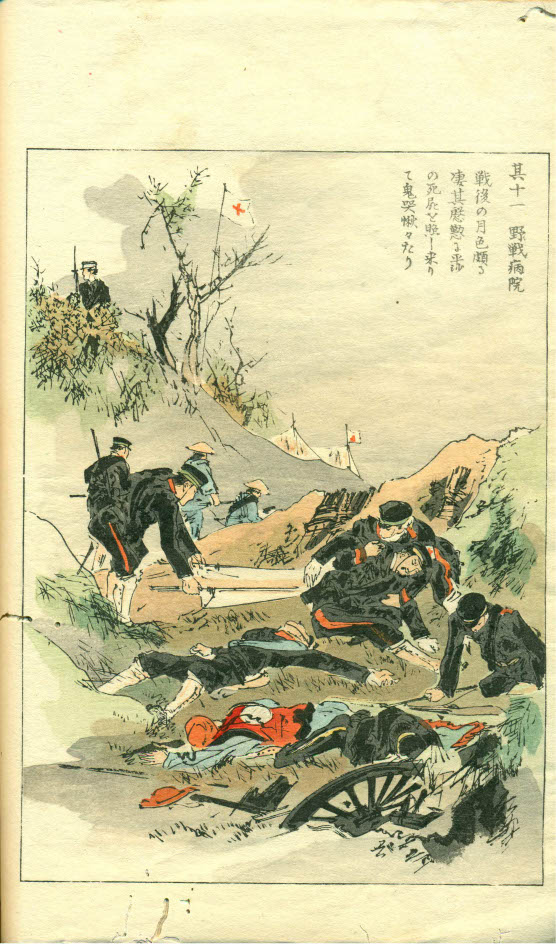
XI. The Field Hospital of Jappanese Army at the southern
Bank of the Dai-Don River.
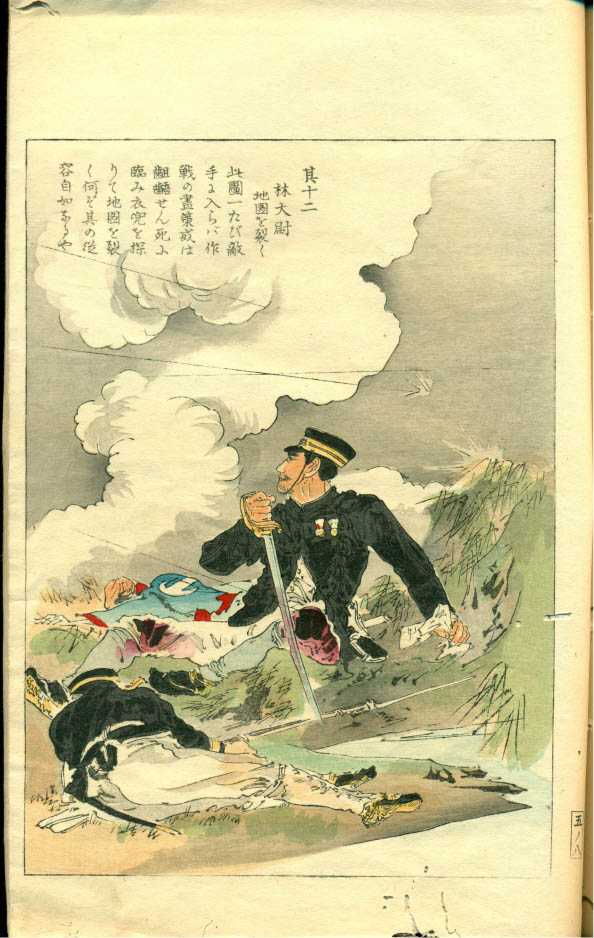
XII.
Lieut. T. Hayashi :-The Lieutenant was an officer under
General Oshima, while he was fighting bravely in purpose
for taking the enemy's ramparts, he was unhappily shot
vital. At the moment, the Japanese were compelled to
give up, for a time, the place which they had once
seized. The soldiers under him therefore had tried to
help him in accompanying him with them in the retreat.
But he refused it and said, "I have been too severely
shot to retreat. I shall die here. You may help yourself
without minding me." He remained fell in the field,
teared the map in his pocket into pieces, as he thought
it injurious to let the enemy look on it, and breathed
his last expire there.
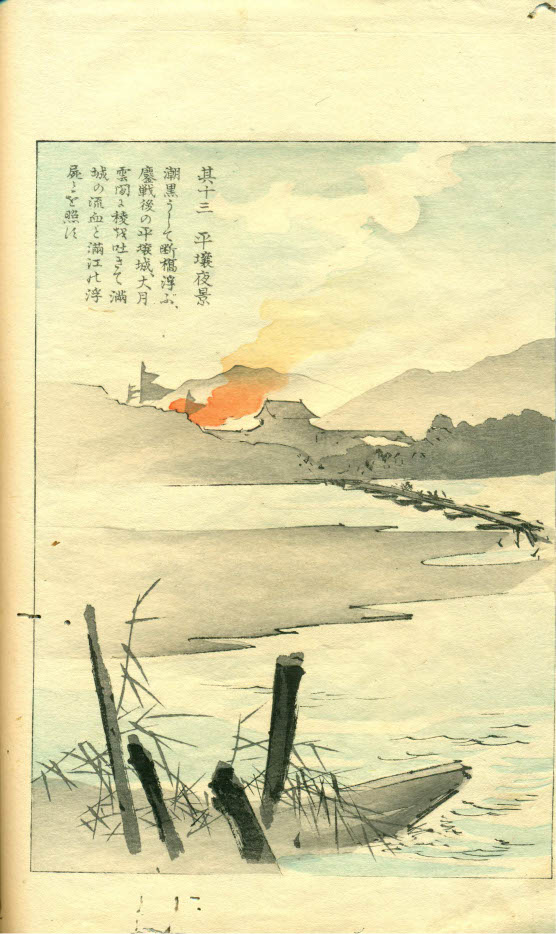
XIII.
The Battle of Ping Yang Castle :-The Branch forces
headed by General Tatsumi and Colonel Sato have first
succeeded in entering the Castle, as the enemy did not
expect their foes on their back and sides, though they
made their utmost in resistance. Thus the castle of Ping
Yang was taken to Japanese in consequence of the
Chinese's escaping to the Wiju at the moon night of the
16th October,
1894.
SHUN -
Y O - D O.
THE
PUBLISHERY
No. 5,
Tori Shichome, Nihonbashi, Tokyo, Japan.
[